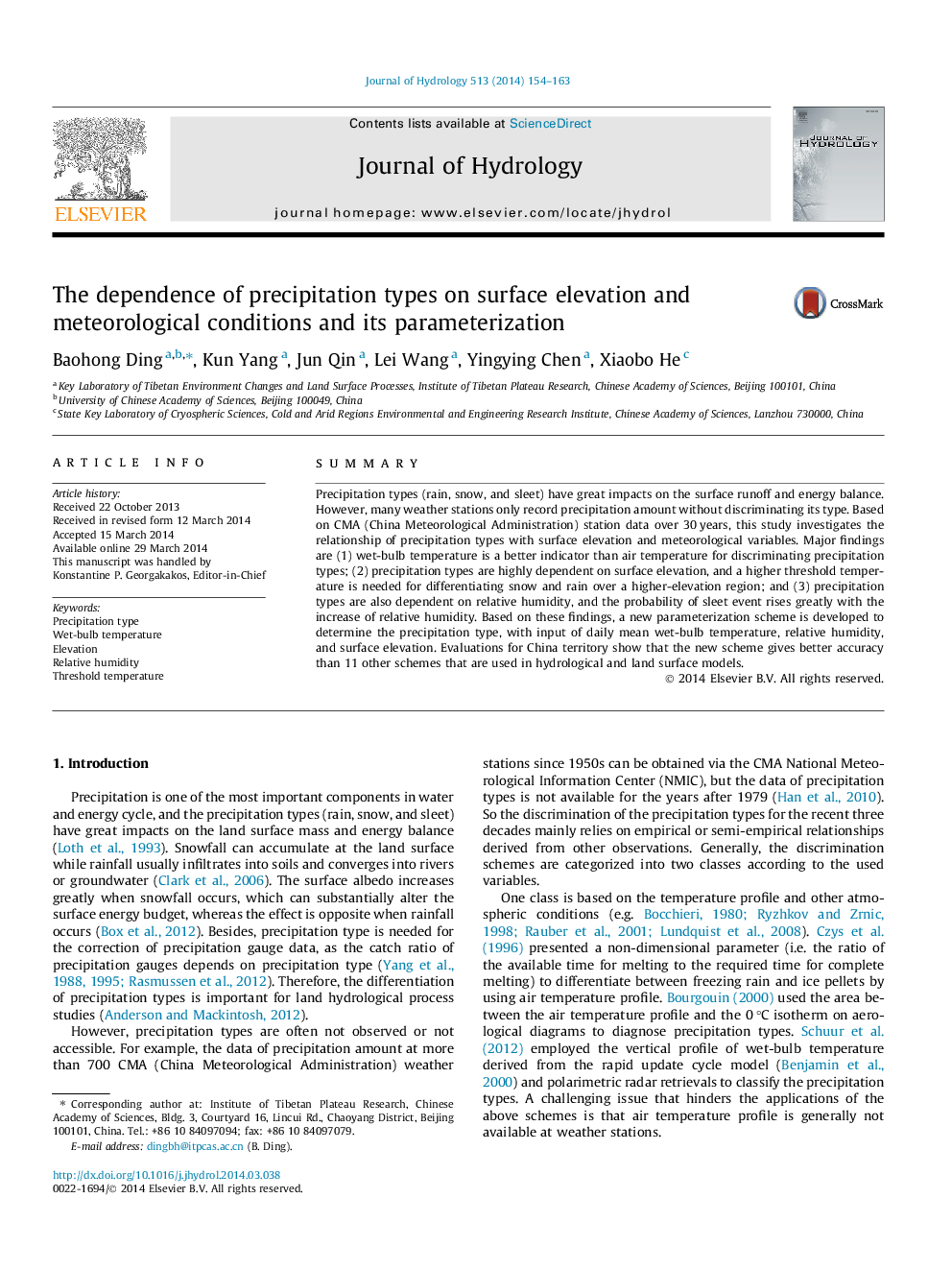| Article ID | Journal | Published Year | Pages | File Type |
|---|---|---|---|---|
| 6412725 | Journal of Hydrology | 2014 | 10 Pages |
â¢Precipitation types highly depend on surface air temperature, relative humidity and elevation.â¢A dynamic temperature threshold scheme is developed to discriminate the rain, sleet, and snow.â¢The new parameterization scheme outperforms 11 schemes that have been used in hydrological and land surface models.
SummaryPrecipitation types (rain, snow, and sleet) have great impacts on the surface runoff and energy balance. However, many weather stations only record precipitation amount without discriminating its type. Based on CMA (China Meteorological Administration) station data over 30Â years, this study investigates the relationship of precipitation types with surface elevation and meteorological variables. Major findings are (1) wet-bulb temperature is a better indicator than air temperature for discriminating precipitation types; (2) precipitation types are highly dependent on surface elevation, and a higher threshold temperature is needed for differentiating snow and rain over a higher-elevation region; and (3) precipitation types are also dependent on relative humidity, and the probability of sleet event rises greatly with the increase of relative humidity. Based on these findings, a new parameterization scheme is developed to determine the precipitation type, with input of daily mean wet-bulb temperature, relative humidity, and surface elevation. Evaluations for China territory show that the new scheme gives better accuracy than 11 other schemes that are used in hydrological and land surface models.
